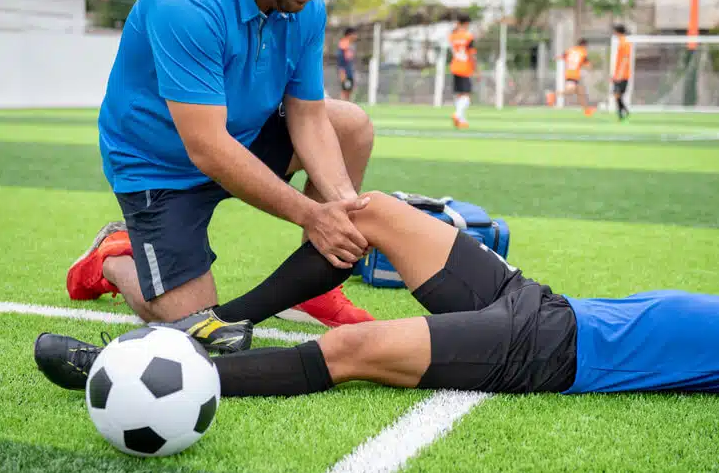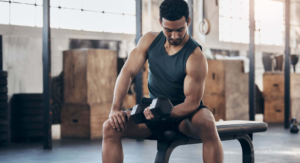Samwyche.com – Comprehensive Guide on How to Prevent Sports Injuries Participation in sports and physical activities offers a multitude of benefits, from improving cardiovascular health to enhancing mental well-being. Engaging in sports, whether competitively or recreationally, is a fantastic way to stay active and maintain a healthy lifestyle. However, this active lifestyle comes with inherent risks—sports injuries.
Sports injuries, ranging from minor sprains to severe fractures, can not only be painful and debilitating but can also have long-term consequences on an individual’s overall health and performance. These injuries can result in medical expenses, time away from the sport, and in some cases, they may lead to chronic conditions that affect an individual’s quality of life.
The good news is that many sports injuries are preventable with the right knowledge, preparation, and care. This comprehensive guide aims to equip athletes, fitness enthusiasts, coaches, and parents with essential information and practical strategies to minimize the risk of sports injuries. We will explore the various aspects of injury prevention, from understanding the common types of injuries to implementing effective warm-up routines, utilizing proper techniques, selecting appropriate equipment, maintaining a balanced diet, and allowing for adequate rest and recovery.
By following the guidance provided in this guide, you’ll be better equipped to enjoy the numerous benefits of sports and physical activities while significantly reducing the likelihood of encountering debilitating injuries.
Understanding Sports Injuries
Comprehensive Guide on How to Prevent Sports Injuries
Sports injuries can vary widely in terms of severity, affected body parts, and causes. Understanding these injuries is crucial to devising effective prevention strategies. Let’s delve into the common types of sports injuries and the factors that contribute to their occurrence.
A. Common Types of Sports Injuries
1. Sprains and Strains
Sprains involve the stretching or tearing of ligaments, while strains involve stretching or tearing of muscles or tendons.Commonly occur in ankles, knees, and wrists.
2. Fractures
A break or crack in a bone, usually caused by sudden impact or excessive force.Can be categorized as stress fractures (repeated stress on a bone) or acute fractures (sudden injury).
3. Dislocations
Displacement of bones from their normal positions at a joint.Common in shoulders, elbows, and fingers.
4. Concussions
A traumatic brain injury resulting from a blow to the head or body that causes the brain to move rapidly within the skull.Can have short-term and long-term effects on brain function.
5. Tendonitis
Inflammation or irritation of a tendon due to overuse or sudden, intense activity.Common in tendons around joints like the shoulder, elbow, or knee.
6. Contusions
Bruising or bleeding under the skin due to direct impact or trauma to the muscles.Commonly seen in contact sports.
B. Causes and Risk Factors
1. Overuse
Repeating the same motion or activity without adequate rest and recovery.Common in endurance sports and activities that involve repetitive movements.
2. Improper Training and Technique
Inadequate training, poor form, or incorrect techniques can strain muscles and joints, leading to injuries.
3. Lack of Warm-Up and Cool-Down
Skipping warm-up exercises or cool-down stretches can make muscles and ligaments more susceptible to injury.
4. Inadequate Equipment
Ill-fitting or outdated sports equipment can increase the risk of injuries.
5. Environmental Factors
Poor playing surfaces, extreme weather conditions, or inadequate lighting can contribute to accidents and injuries.
Understanding these injury types and their causes sets the stage for effective preventive measures.
Preparing for Physical Activity
Proper preparation before engaging in physical activity is fundamental in preventing sports injuries. It helps to condition the body, increase flexibility, and reduce the risk of strains or sprains. Below are crucial steps to ensure a safe start to your workout or sports activity.
A. Importance of Warm-Up and Cool-Down Exercises
1. Warm-Up Exercises
Purpose: Elevate heart rate, increase blood flow to muscles, and prepare the body for activity.
Components: Light aerobic exercises, dynamic stretching, and mobility exercises targeting major muscle groups.
Duration: 10-15 minutes.
2. Cool-Down Exercises
Purpose: Gradually lower heart rate, stretch muscles, and prevent stiffness and soreness.
Components: Static stretching and gentle movements that promote flexibility.
Duration: 10-15 minutes.
B. Tips for Proper Stretching and Flexibility Exercises
1. Dynamic Stretching
Perform controlled, smooth movements through a full range of motion to warm up muscles and joints.Focus on movements related to the activity you’re about to engage in.
2. Static Stretching
Hold stretches for 15-30 seconds per muscle group after your workout or activity to improve flexibility.Target major muscle groups, including legs, arms, back, and neck.
3. Proprioceptive Neuromuscular Facilitation (PNF):
Incorporate PNF stretching techniques, involving contraction and relaxation of the muscle during stretching, to improve flexibility.
4. Frequency
Stretch regularly, ideally daily, to maintain and improve flexibility over time.By incorporating these warm-up and cool-down exercises into your routine, you’ll prime your body for physical activity and reduce the risk of injuries.
Building Strength and Conditioning
Strength and conditioning are key components of sports injury prevention. A well-conditioned body with adequate muscle strength can better withstand the demands of physical activity and reduce the risk of injuries. Here are strategies to build strength and improve overall conditioning.
A. Strategies for Building Muscle Strength
1. Resistance Training
Incorporate weightlifting, resistance bands, or bodyweight exercises to target major muscle groups.Gradually increase the intensity of resistance to build strength over time.
2. Functional Movements
Focus on exercises that mimic movements relevant to your sport or activity.Emphasize compound movements like squats, deadlifts, and lunges.
3. Progressive Overload
Gradually increase the amount of weight, sets, or repetitions to challenge your muscles and encourage growth.
4. Rest and Recovery
Allow adequate time for muscles to recover and rebuild after strength training sessions.Aim for 48-72 hours of recovery between workouts targeting the same muscle groups.
B. Incorporating Balance and Stability Exercises
1. Balance Exercises
Practice single-leg stands, balance on unstable surfaces, or use balance boards to enhance stability and coordination.Include balance exercises in your warm-up routine.
2. Core Strengthening
Strengthen the core muscles (abdominals, lower back, hips) to improve stability and posture.Perform exercises like planks, Russian twists, and bicycle crunches.
3. Plyometrics
Integrate plyometric exercises (e.g., box jumps, burpees, jump squats) to improve explosive strength and agility.
Yoga and Pilates
Engage in yoga or Pilates sessions to improve flexibility, balance, and overall body control.By incorporating these strength-building and conditioning strategies into your fitness regimen, you’ll enhance your ability to perform at your best and reduce the risk of injuries.
Conclusion
Sports injuries are a reality, but with the right knowledge, preparation, and care, their occurrence can be significantly minimized. This comprehensive guide has explored various aspects of sports injury prevention, ranging from understanding the common types of injuries to implementing effective warm-up routines, utilizing proper techniques, selecting appropriate equipment, maintaining a balanced diet, and allowing for adequate rest and recovery.
We began by emphasizing the importance of injury prevention, recognizing the value of an active lifestyle, and acknowledging the risks associated with sports participation. Understanding the types and causes of sports injuries laid a foundation for devising effective preventive measures.
Preparing for physical activity was emphasized through warm-up and cool-down exercises, vital components in priming the body for movement and aiding in recovery post-activity. We highlighted the significance of proper stretching and flexibility exercises, ensuring that your muscles and joints are flexible and ready to perform optimally.
Building strength and conditioning were identified as crucial pillars in preventing sports injuries. We discussed strategies such as resistance training, functional movements, balance exercises, and stability exercises to enhance muscle strength, stability, and overall fitness.
Moreover, acknowledging the importance of proper technique and form shed light on the role it plays in injury prevention. Implementing appropriate form in sports and physical activities can significantly reduce the risk of strains, sprains, and other injuries.
Selecting the right equipment and gear, maintaining proper hydration and nutrition, prioritizing rest and recovery, and listening to your body were discussed as essential components in preventing sports injuries. Lastly, seeking professional guidance and knowing when to consult healthcare professionals were highlighted to ensure a holistic approach to injury prevention.
By embracing the knowledge and strategies provided in this guide, you’re equipped to enjoy the benefits of sports and physical activities while significantly reducing the risk of sports-related injuries. Remember, a safe and sustainable sports experience begins with prevention and responsible participation.



